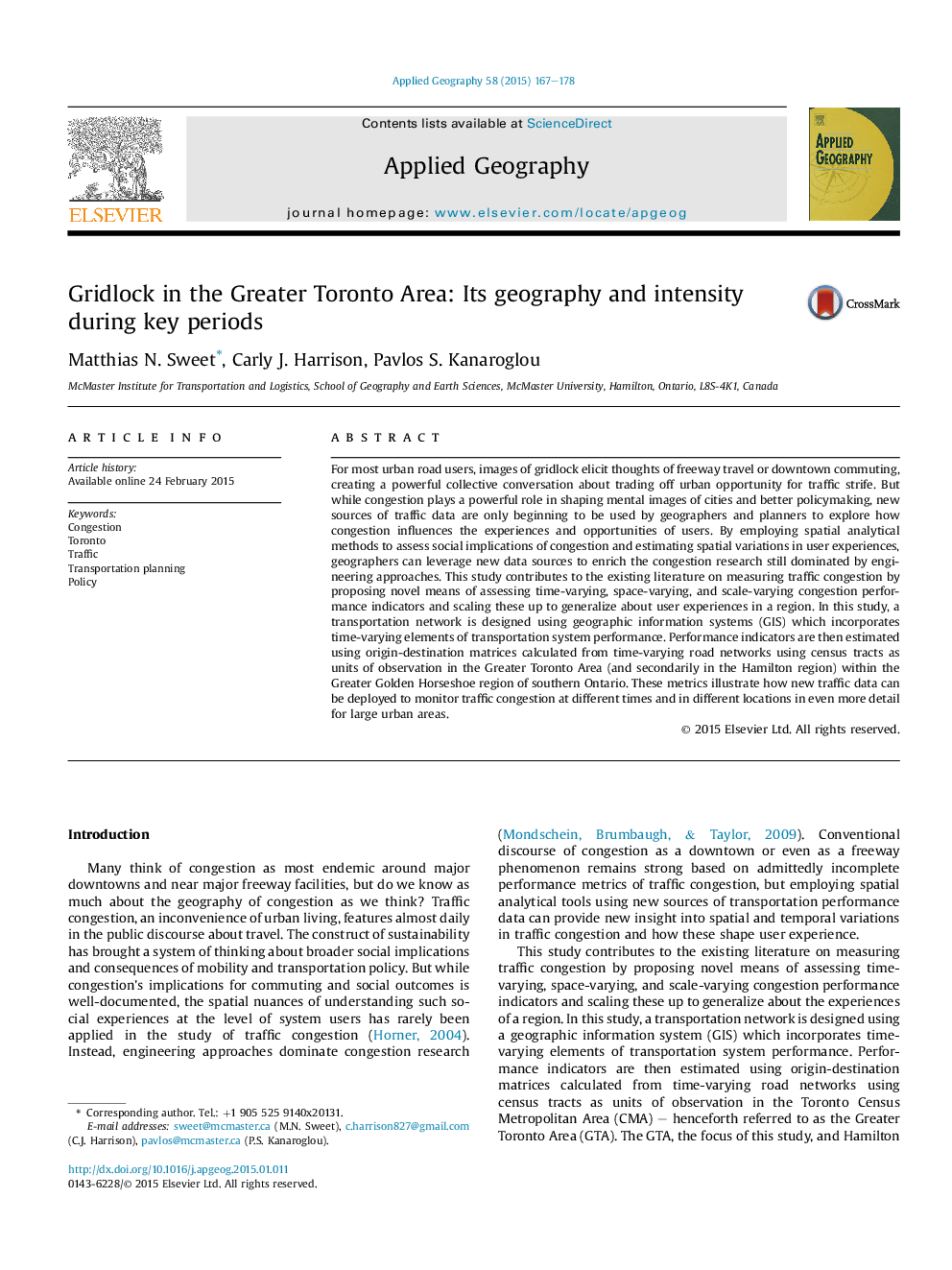| Article ID | Journal | Published Year | Pages | File Type |
|---|---|---|---|---|
| 6538602 | Applied Geography | 2015 | 12 Pages |
Abstract
For most urban road users, images of gridlock elicit thoughts of freeway travel or downtown commuting, creating a powerful collective conversation about trading off urban opportunity for traffic strife. But while congestion plays a powerful role in shaping mental images of cities and better policymaking, new sources of traffic data are only beginning to be used by geographers and planners to explore how congestion influences the experiences and opportunities of users. By employing spatial analytical methods to assess social implications of congestion and estimating spatial variations in user experiences, geographers can leverage new data sources to enrich the congestion research still dominated by engineering approaches. This study contributes to the existing literature on measuring traffic congestion by proposing novel means of assessing time-varying, space-varying, and scale-varying congestion performance indicators and scaling these up to generalize about user experiences in a region. In this study, a transportation network is designed using geographic information systems (GIS) which incorporates time-varying elements of transportation system performance. Performance indicators are then estimated using origin-destination matrices calculated from time-varying road networks using census tracts as units of observation in the Greater Toronto Area (and secondarily in the Hamilton region) within the Greater Golden Horseshoe region of southern Ontario. These metrics illustrate how new traffic data can be deployed to monitor traffic congestion at different times and in different locations in even more detail for large urban areas.
Related Topics
Life Sciences
Agricultural and Biological Sciences
Forestry
Authors
Matthias N. Sweet, Carly J. Harrison, Pavlos S. Kanaroglou,
